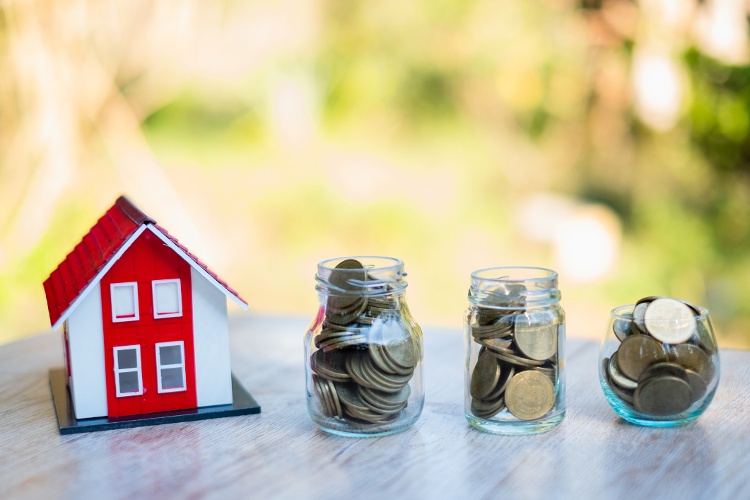Investing $50,000 in real estate can go a long way toward creating a diversified rental property portfolio that generates strong cash flow, provided that you do it right.
In fact, Gallup recently reported that more Americans view real estate investing as the best long-term investment, even over stocks and mutual funds.
Here’s how you can invest $50,000 in real estate starting today.
Five Ways to Invest $50k in Real Estate
Although it may not seem like enough money, there are a variety of ways you can invest $50,000 in real estate.
Popular choices range from buying real estate related stocks online, to pooling your investment money with other people, to buying property the old fashioned way – one house at a time.
1. REITs
What it is: Real estate investment trusts (REITs) are publicly held companies that own and operate income-producing property. Usually REITs invest in a specific real estate asset class, such as industrial, healthcare, retirement properties, and residential.
Pros: Broad exposure to different types of real estate in various markets. Also a good way to stay liquid, because you can buy and sell shares of a REIT online anytime the market is open.
Cons: One of the biggest drawbacks to owning shares of a REIT is the return. The two largest residential REITs - AvalonBay and Equity Residential - provide a dividend yield of just over 4% (as of May 2020).
2. Crowdfunding
What it is: Crowdfunding and real estate syndications are created when a large number of investors contribute to a deal created by a sponsor. The sponsor of a crowdfund is responsible for overseeing the property acquisition, financing and management, leasing, and disposition when the time comes to sell.
Pros: Returns on a crowdfunding real estate investment vary from deal to deal. They’re usually much higher than the yield from a REIT and as an investor you know exactly what type of property your money is going into.
Cons: One of the potential drawbacks to investing in a crowdfund is that oftentimes the best deals are open only to accredited investors, people who have a high net worth or a six-figure annual income.

3. JV partnership
What it is: Similar in concept to a crowdfund, except you know the other investors involved in the deal. Some partners may contribute only capital as passive investors, while other partners may actively develop and manage the investment.
Pros: You know who the other investors are. Although the property invested in may be smaller, you’re sharing any potential profits and tax benefits with few partners.
Cons: Because there are fewer investors involved the investment risk may be greater. Different work ethics and investment strategies can create conflict, and poor decisions made by the general partner can have a negative effect on the potential return.
4. Rehab or foreclosure
What it is: The classic real estate investment strategy of buying low and selling high. Sources for below-market rehab and foreclosure property include distressed sellers, bank REO departments, and auctions.
Pros: In exchange for the risk of buying a property in an as-is condition, experienced investors who understand this type of real estate investing can make a potentially large profit by fixing and flipping.
Cons: Timing is everything. If an investor buys a rehab while the market cycles downward, it may be impossible to sell at a profit. Requires a lot of hands-on effort and in-depth market knowledge.
5. Turnkey rental property
What it is: Property that has all repairs and updating completed, frequently with a tenant in place. Can be found among all different real estate classes, although turnkey rental property is increasingly in demand from buy-and-hold investors.
Pros: Perhaps the safest investment strategy for people looking for passive income from real estate. Rentals are professionally managed and cash flow begins the day the deal closes.
Cons: Potential for short-term negative cash flow while the property is turned from one tenant to the next. Investors still need to monitor property performance by reviewing reports and financial statements from the property manager.

How to Buy More With Less
A good way to think about buying more with less is to ask how you can minimize risk while maximizing your reward. While that may sound like a cliché, the fact is it’s the exact strategy that successful, long-term real estate investors follow.
The Power of Leverage
By using leverage you can put your $50,000 investment egg in more than one basket.
Instead of buying a single $200,000 rental property using a conservative down payment of $50,000 you could invest in two turnkey income properties priced at $100,000 each using the same LTV of 25%:
- One $200,000 rental = $50,000 down payment + 1 income stream + 1 appreciation long-term
- Two $100,000 rentals = $50,000 down payment + 2 income streams + 2 appreciations long-term
You still have the same total debt amount of $150,000. But, by using the power of leverage to your advantage, you’ve doubled the number of income cash flow streams and have two properties that could appreciate over the long term.
By investing in more than one property with the same amount of capital you’ve also significantly reduced the risk of having negative cash flow.
If you have only one rental and the tenant leaves, your vacancy rate is 100% and your cash flow is negative until your property manager can find a new tenant.
On the other hand, when you have two rentals and the tenant leaves in one of the houses, your vacancy rate is reduced by half and you still have cash flow from the occupied property to help pay the bills on the house that is being re-rented.
Geographic Diversification
The above example shows how you can use leverage to diversify your real estate portfolio and reduce risk. By using a long-distance real estate investment strategy, you can also reduce the risk in your portfolio by diversifying geographically.
While it’s tempting to think of the nation as one big real estate market, the fact is there are over 19,000 cities in the U.S. Some are small places with only a few thousand people, others are megalopolises like Los Angeles and New York that are home to millions of residents.
What each of these cities has in common is that they’re distinctly unique. The people are different, the economies are different, and the real estate markets are different. As Robert Kiyosaki, founder of the Rich Dad Company once said, “The problem with real estate is that it’s local. You have to understand the local market.”
Successful real estate investors are experts at turning perceived “problems” into opportunities. Today, companies such as Zillow and Roofstock make it easy to research different real estate markets online to find the best places for single-family turnkey investment property.
For example, with the Roofstock Neighborhood Rating you can enter the address of any single-family house in the U.S. to receive a neighborhood profile and a summary of the area’s potential risks and rewards. It’s a good way to understand the pros and cons of each real estate market in the U.S. so you can diversify your investment portfolio geographically.
Here’s How You Could Turn $50k Into $100k
Now let's look at an example of how your initial $50,000 investment in rental real estate could grow over a 5-year holding period when you purchase two rental properties.
We’ll use the following assumptions for each house, based on an actual turnkey rental property for sale on the Roofstock Investment Property Marketplace:
.png?width=1999&name=image1%20(5).png)
- Purchase price = $92,000
- Down payment = $23,000
- PITI = $6,773
- Gross rental income = $13,623
- Expenses = $4,237
- Net cash flow = $2,613
- Appreciation: 3.3% per year
At the end of five years, the forecast returns per house are:
- Total return = $28,627 (cumulative net cash flow plus profit made on sale of house)
- Annualized return = 17.2%
- Cap rate = 8.0%
- Gross yield = 15.6%
- Cash on cash return = 9.2%
So, if you used your $50,000 to purchase two single-family houses that generated the same returns, your total return for both houses would be over $57,000 after getting your initial investment of $50,000 back.
In other words, in just five years, you’ve more than doubled your original investment.

3 Ways to Avoid Losing Money
Experienced investors know that you shouldn’t invest more than you can afford to lose. Of course, they’re talking about a worst case scenario.
While there’s a lot of truth to that advice, the fact is that there are plenty of ways to minimize the risk in almost any investment while working hard to maximize the rewards.
Here are three of the best ways to avoid losing money when you invest in real estate.
1. Don’t invest all of your savings
If your total assets are $50,000, always leave some money in the bank instead of putting every single penny into a rental property. That’s because you’ll want to set aside some money as an emergency fund – or in real estate lingo, a “capital reserve” account.
Even with the best investments, something can occasionally go wrong.
The HVAC on your rental property may go out in the middle of an August heat wave, or your youngest child may need braces. If you don’t have extra funds, you may find yourself forced to sell at the worst possible time. That’s a situation that no investor wants to be in.
2. Buy in secondary real estate markets
Many investors are surprised to discover that their money goes much further in markets that are “off the radar screen” of the general investing public. In fact, in smaller markets such as Corpus Christi, Texas, La Crosse, Indiana, and Memphis, Tennessee you can frequently find deals where you can buy two or three single-family turnkey rental houses and still keep your LTV (loan-to-value) ratio very conservative.
Some people feel that owning rental property in small, secondary markets isn’t as glamorous as owning real estate in Southern California, New York City, or Miami.
But let’s face it. Would you rather brag about owning a property in a high-tax, high cost of living market that is barely generating positive cash flow? Or, would you rather boast about high cap rates and double digit yields your investments are generating?
3. Invest in Class B single-family workforce housing
Sometimes unattractive investments are the most profitable. Class B – or plain vanilla – rental property can generate strong consistent cash flow year after year when you buy in the right location at the right price.
In many markets, average-looking rental property is known as workforce housing. Prospective tenants for this type of rental property include police and teachers, service workers, and other people who make a good median income and just want a nice place to live.
Investing in Class B property is perfect if you’re using a long distance real estate investment strategy. Because these types of single-family rental houses usually attract more qualified tenants, occupancy rates are higher, and problems are fewer.
Final Thoughts
Investing $50,000 in real estate can jumpstart your journey toward financial freedom in just a few short years.
By buying two solid properties with strong cash flow in a secondary market, your initial investment of $50K could turn into more than $100K in only five years. Then, by following the same investment strategy, you can keep building your real estate portfolio by buying more rental property.
Soon, you could have the desired income to be living the life you want and your family deserves.









